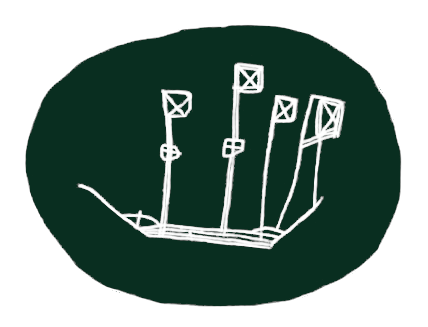Did you know...
- The name “Salthouse” derives from the Middle English “Salt-hous” meaning a “building where salt is made, stored or sold”.
- There is a reference to Salthouse in the Doomsday Book which was compiled in 1086.
- Mesolithic flints and the remains of a Bronze Age food vessel were found following an archeological dig on Gramborough Hill which can be seen off the seaward side of the Coast Road (A148) at Salthouse.
- Following an archeological dig at Salthouse in 1980, a bronze bird, thought to be a duck and a part of a Roman brooch, was found by a pupil from Greshams School in Holt.
- There is evidence that a Roman-British settlement occupied Gramborough Hill from the early third century up until the middle of the fourth century.
- From Roman times, up until the mid-1500’s when the ‘Mayne Channel’ became unnavigable, the ancient Port of Salthouse was one of several ports along the North Norfolk coast (known collectively as ‘the Glaven Ports’. These ports were able to accommodate large ships and a local fishing industry.
- Salthouse was the birthplace of Vice Admiral Sir Christopher Myngs.
- The galleon adopted by Salthouse History Group as their ‘logo’ replicates the 17th century graffiti which is thought to be the handiwork of choristers and which can be seen carved on the back of the choir stalls in St Nicholas Church, Salthouse.
- In January 1945 a Lancaster Bomber which was a member of 61 Squadron was returning from a bombing mission over Germany when it struck the 200 foot pylon of a radar station based on Salthouse Heath. The aircraft was attempting to land in bad weather conditions with poor visibility at nearby Langham Airfield. All crew aboard the aircraft were killed but miraculously, the radar operators who were working in the station were uninjured.
- During World War 2 there was a prisoner of war camp behind where Catriona Court now stands. By the end of the war, the camp was housing around 100 German soldiers
- Salthouse has been the victim of serious coastal flooding over the centuries. The most devastating of these floods occurred in 1953 resulting in loss of life and irreparable damage to properties along the Coast Road.
For further information about Salthouse’s history, do delve into the Salthouse History Group’s legacy site.
